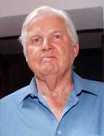Main results:
- Across the advanced economies, the Outlook predicts 1.3 percent growth in 2013, compared to 1.2 percent in 2012. The slight uptick is largely due to the Euro Area, which is expected to return to very slow growth of 0.2 percent after the -0.6 percent contraction in 2012. U.S. growth is expected to fall from 2.1 percent in 2012 to 1.8 percent in 2013.
- In the medium-term, the outlook expects the U.S. and other advanced economies to go some ways toward closing large output gaps – that is, the difference between current output and the level of output an economy can produce in a noninflationary way, given the size of its labor force and its potential to invest in and create technological progress. The current output gap is a result of weak demand due to the 2008-2009 crisis. This development should allow the U.S. to average 2.3 percent annual growth during 2013-2018 before falling to 2.0 percent in 2019-2025. In the same two periods, Japan is expected to grow at 1.1 percent and 0.9 percent, respectively.
- A more significant slowdown is expected for less mature economies over the next year – and beyond. Overall, growth in developing and emerging economies is projected to drop from 5.5 percent in 2012 to 4.7 percent in 2013, with growth falling in China from 7.8 to 6.9 percent and in India from 5.5 to 4.7 percent. From 2019-2025 emerging and developing countries are projected to grow at 3.3 percent.
- The long-term global slowdown we project to 2025 will be driven largely by structural transformations in the emerging economies. As China, India, Brazil, and others mature from rapid, investment-intensive ‘catch-up’ growth to a more balanced model, the structural ‘speed limits’ of their economies are likely to decline, bringing down global growth despite the recovery we expect in advanced economies after 2013.
Global Outlook for Growth of Gross Domestic Product, 2013-2025 (November 2012)

**Other advanced includes Canada, Israel, Iceland, Korea, Australia, Taiwan Province of China, Hong Kong, Singapore, and New Zealand.
***Southeast Europe includes Albania, Bosnia & Herzegovina, Croatia, Macedonia, and Serbia & Montenegro, and Turkey.
Source: The Conference Board Global Economic Outlook 2013, November 2012
Global Outlook for Growth of Gross Domestic Product, 1996-2013 (November 2012)
**Other advanced includes Canada, Israel, Iceland, Korea, Australia, Taiwan Province of China, Hong Kong, Singapore, and New Zealand.
***Southeast Europe includes Albania, Bosnia & Herzegovina, Croatia, Macedonia, and Serbia & Montenegro, and Turkey..
****The percentage contributions to global growth are computed as log differences and therefore do not exactly add up to the percentage growth rate for the world economy.
Source: The Conference Board Global Economic Outlook, November 2012.
Comparison of Base Scenario with Optimistic and Pessimistic Scenarios, 2013 - 2025 (November 2012)
**Other advanced includes Canada, Israel, Iceland, Korea, Australia, Taiwan Province of China, Hong Kong, Singapore, and New Zealand.
***Southeast Europe includes Albania, Bosnia & Herzegovina, Croatia, Macedonia, and Serbia & Montenegro, and Turkey.
Source: The Conference Board Global Economic Outlook 2013, November 2012
About The Conference Board Global Economic Outlook
- For detailed methodology, click here.
- For underlying data, click here.
Methodological Notes
- Short-term (2013) projections are based on The Conference Board U.S. Economic Forecast, The Conference Board Leading Economic indexes (LEIs) for 11 countries/regions, and secondary sources, such as the World Economic Outlook (International Monetary Fund), the Economic Outlook (Organization for Economic Cooperation and Development), European Commission and Congressional Budget Office.
- Medium-term (2014-2018) and long-term (2019-2025) projections are based on a growth accounting model, looking at the contributions of labor, capital and total factor productivity to growth. Growth in labor is approximated by the growth in working age population. Capital growth and total factor productivity growth are estimated by system of equations which are largely based on relevant past-period variables and some economic variables.
- The projected GDP growth, based on the growth accounting framework, is considered relative to measured trend growth of an economy. Our optimistic and pessimistic scenarios are based on the deviation of capital growth and total factor productivity growth from their respective trend growth.
- The calculation of measures of regional and global GDP growth requires levels of GDP to weigh the growth rates of individual countries and regions by their size of GDP. The country and region GDP weights are current weights, which are the average for the beginning and the end of each period, and which are benchmarked on purchasing power parity (PPP)-adjusted GDP from Penn World Table 7.0.





















































































































































